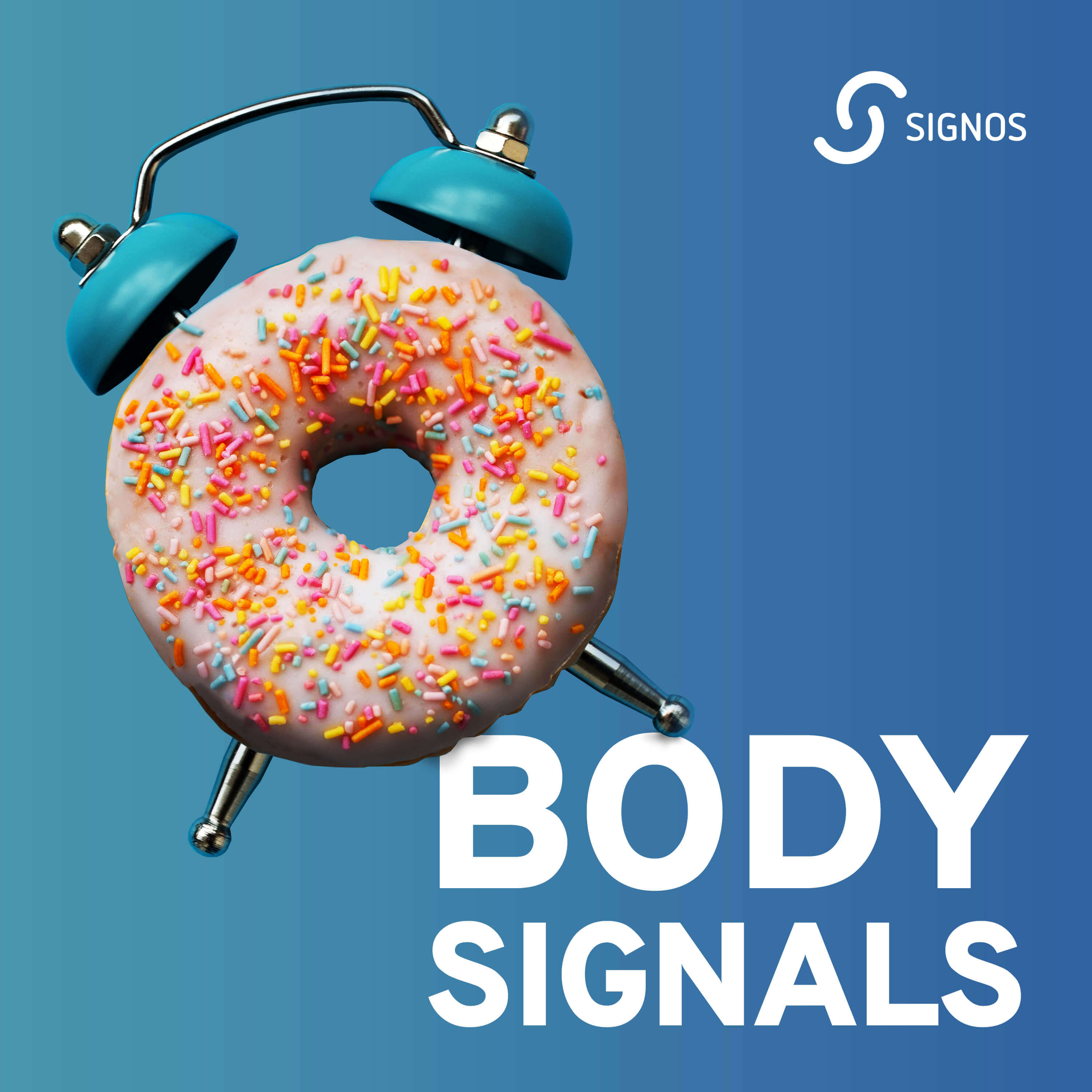Running is one of the most accessible and effective forms of exercise and cardio, offering many benefits for the body and mind. Among its many advantages, running is well-known for its potential to aid in weight loss and body recomposition. In fact, individuals who commit to a consistent running routine can lose between 10 to 20 pounds within the first three to six months, depending on factors like diet, workout intensity, and starting weight. By burning calories, improving cardiovascular health, and boosting metabolism, running can be a powerful tool for those looking to shed pounds while also improving their overall fitness and wellbeing.1, 2, 3
It's important to recognize that weight loss through running isn't always the best approach for everyone, and at times, it is not the most advisable strategy as the two goals can conflict. For example, running requires prioritizing fueling with high amounts of calories; thus, attempting to decrease your calorie intake to lose body fat while running may be dangerous for muscle recovery and bone health. In general, rapid or excessive weight loss can lead to various health issues, making it crucial to pursue weight loss goals safely and gradually.
This article will explore how running can be effectively incorporated into a weight loss plan while addressing the importance of listening to your body, setting realistic goals, and maintaining a balanced approach to fitness.
{{mid-cta}}
Is Running a Good Way to Lose Weight?

Running is a highly effective form of physical activity for weight loss due to its ability to burn many calories in a relatively short time. As a high-intensity cardiovascular activity, running elevates your heart rate, leading to increased calorie expenditure during and after your workout. The more intense the run, the more calories you burn, making it an efficient way to create the calorie deficit needed for weight loss. Additionally, running engages multiple muscle groups, which helps to build lean muscle mass and further boosts your metabolism, enabling your body to burn more calories even at rest.1, 3, 4, 5
Beyond the immediate calorie burn, running is also a versatile and accessible aerobic exercise, making it easy to do wherever you are. You don’t need expensive equipment or a gym membership to get started—just a good pair of running shoes and a safe route. Whether you prefer to run outdoors, on a treadmill, or as part of a group, the flexibility of running makes it easy to fit into almost any schedule. Most importantly, running can be easily adjusted to suit your fitness level, allowing you to increase intensity as your endurance and strength improve gradually. Remember, walking breaks come with zero shame and, in fact, can be an effective strategy for interval-type running workouts and should be incorporated when you first start a running program.
Lastly, running offers significant mental health benefits, which can indirectly support weight loss efforts. The act of running stimulates the release of endorphins, often called "feel-good" hormones. These specific hormones help improve mood and reduce feelings of stress, anxiety, and depression. This boost in mental well-being helps to create a positive feedback loop, where reducing stress levels makes it easier to stick to healthy eating habits and maintain a regular exercise routine. Elevated stress levels can drive our bodies to store more fat than is necessary. Thus, finding an active outlet like running that burns calories and decreases stress hormones (cortisol) is a win-win scenario. The sense of accomplishment and improved self-esteem that comes from regular running can further motivate individuals to pursue their weight loss goals consistently and with greater confidence.6
What Are the Benefits of Running?
Running offers a multitude of benefits that extend far beyond just weight loss. As a full-body workout, it strengthens muscles, improves cardiovascular health, and enhances overall endurance. As previously mentioned, running can also boost your mental well-being by reducing stress and increasing feelings of happiness by releasing endorphins.7
This section will explore these benefits in more detail, highlighting how running can contribute to a healthier, more balanced lifestyle and achieve weight loss goals while serving as a foundation for long-term physical and mental well-being.
- Enhances Lung Capacity: Running increases your respiratory rate, strengthening your lungs and improving their capacity. This allows your body to breathe more oxygen, enhancing endurance and overall performance in various athletic and recreational activities.8
- Improves Mental Health: Running triggers the release of endorphins, which are natural mood lifters. It helps reduce symptoms of anxiety and depression, lowers stress levels, and provides mental clarity that can boost overall emotional well-being. A study performed in 2023 found running to be just as effective as antidepressants for lowering the symptoms of depression and anxiety.9
- Reduces the Risk of Chronic Illnesses: Regular running helps lower the risk of developing chronic conditions such as heart disease, type 2 diabetes, and hypertension. By maintaining a healthy weight, controlling blood sugar levels, and improving cholesterol profiles, running can be a powerful tool in disease prevention.10, 11
- Improves Cardiovascular Health: Running strengthens the heart, making it more efficient at pumping blood throughout the body. This reduces the risk of heart-related conditions, lowers blood pressure, and improves overall heart health and circulation, contributing to a healthier cardiovascular system.2, 11
- Increases Muscle Strength: Running engages various muscle groups, particularly in the legs, core, and lower back. Over time, it builds and tones muscles, improves joint stability, and enhances overall muscular endurance, leading to a stronger, more resilient body.4
- Is Safe on Your Joints: Running is often perceived as harmful to the joints, particularly the knees, but research shows that it can be safe and beneficial for joint health when done correctly. Regular running can strengthen the muscles around the joints, improving their stability and reducing the risk of injury. Additionally, the focus on weight loss leads to a body composition that reduces joint stress. For most people, moderate running does not increase the risk of osteoarthritis and may even lower it by keeping joints well-lubricated and mobile.12
<div class="pro-tip"><strong>Also Read: </strong><a href=aerobic-vs-anaerobic>1The Benefits of Aerobic vs. Anaerobic Exercise and the Impact on Weight Loss</a></a>.</div>
Types of Running and Their Impact on Your Body
Getting out for a run or jog is not a one-size-fits-all activity. There are various types of running, each offering unique physiological benefits to the body. Whether you're sprinting, jogging, or engaging in long-distance runs, each form of running challenges the body differently. Understanding the distinctions between these types can help you tailor your running routine to meet specific fitness goals, such as building endurance, increasing speed, or enhancing muscular strength. Learn about the different types of running and explore how each affects your body, helping you choose the best approach for your personal health and fitness objectives.
- Interval Workouts: This type of running, also known as high-intensity interval training (HIIT), involves alternating between short bursts of high-intensity sprints and periods of lower-intensity jogging or walking. Interval workouts improve cardiovascular fitness, increase speed, and boost calorie burn. They also enhance your anaerobic capacity, allowing you to maintain higher intensities for longer periods.
- Long Runs: Long runs are extended-duration runs at a steady, moderate pace. They are crucial for building endurance, strengthening the heart, and improving the efficiency of your cardiovascular and respiratory systems. Long runs also increase the body's ability to use fat as a fuel source, which is beneficial for distance running and overall stamina and improves body composition. To obtain these benefits, long runs are typically defined as durations longer than 90 minutes.
- Hill Repeats: Hill repeats involve running up a hill quickly, then jogging or walking back down to recover before repeating. This type of running builds strength and power in the legs, particularly in the calves, quads, and glutes. It also improves running form, increases lung capacity, and helps with overall speed and endurance on flat terrain.
- Progression Runs: In a progression run, you start at a slow, easy pace and gradually increase your speed throughout the run, finishing at a faster pace than you started. This type of run enhances endurance, improves pacing skills, and helps the body adapt to running faster over longer distances.
- Base Runs: Base runs are medium-length runs performed at a comfortable pace and moderate intensity (i.e., around Zone 2 heart rate). They form the foundation of most running training programs, helping to build aerobic capacity and improve overall endurance. Consistent base runs contribute to gradual improvements in fitness without placing excessive strain on the body.
- Strides: Strides are short, controlled sprints, usually lasting 20-30 seconds, performed at the end of an easy run. They focus on form, speed, and quick turnover, helping to improve running economy and efficiency. Strides also prepare your muscles for more intense workouts and races by loosening them up and preventing stiffness.
Best Tips to Start Running for Weight Loss

Starting a running routine during your weight loss journey can be exciting and challenging. To ensure success and sustainability, it's essential to approach this new habit with a clear plan and the right mindset. Whether you're a beginner or returning to running after some time away, having practical tips and strategies can help you stay motivated, avoid injury, and achieve your weight loss goals effectively.
In this section, we'll cover the best tips for starting a running program focused on weight loss, offering guidance on easing into running, setting realistic goals, and maintaining consistency for long-term results.
- Prioritize Warming Up and Cooling Down: Before each run, spend 5-10 minutes warming up with dynamic stretches or light jogging to prepare your muscles and reduce the risk of injury. Post-run, cool down with gentle stretching to relax your muscles, improve flexibility, and aid in recovery.
- Increase Your Running Time Gradually: Start with shorter runs and slowly increase your duration and intensity. This gradual approach allows your body to adapt to the demands of running, reduces the risk of injury, and helps prevent burnout, making it easier to stick with your weight loss plan.
- Add Strength Training to Your Routine: Focus on cross-training by incorporating strength training exercises, such as squats, lunges, and core workouts, into your routine to build muscle and boost metabolism. Stronger muscles improve running efficiency and help prevent injuries, while the increased muscle mass can enhance your overall calorie burn.
- Mind Your Nutrition: Pay attention to your diet, focusing on balanced meals that provide the energy needed for your runs while supporting your weight loss goals. Eating the right foods before and after runs will fuel your workouts, aid recovery, and help you achieve a calorie deficit without sacrificing essential nutrients or causing excessive muscle breakdown. You can also consult your healthcare provider, a registered dietitian, or a nutritionist to help you assess where you may need to make changes in your diet.
- Change Up Your Running Routine: Vary your runs by incorporating different workouts, such as intervals, long runs, and hill repeats. This keeps your routine interesting, prevents plateaus, and challenges your body in new ways, which can enhance calorie burning and boost weight loss. If you are unsure how to start a running routine, consult a personal trainer or running coach.
- Celebrate Non-Scale Victories: Focus on the positive changes beyond just the number on the scale, such as improved endurance, better mood, or fitting into clothes more comfortably. Celebrating these non-scale victories can keep you motivated and reinforce the benefits of your running journey, making the process more enjoyable and sustainable.
Learn More About How to Improve Blood Sugar Health With Signos’ Expert Advice
If you have more questions on improving your health, fitness, and nutrition, seek the expert advice of the Signos continuous glucose monitor and Signos team. A continuous glucose monitor (CGM) can give you the insights to make smarter nutrition and exercise choices. The Signos app provides a unique, personalized program to help you lose weight and reach your health goals. Take this quiz to see if Signos is a good fit for you and reach your goals faster than ever before.
<div class="pro-tip"><strong>Learn More: </strong><a href=exercise-at-night>Exercise at Night: The Pros and Cons of Nighttime Workouts</a>.</div>
- Item 1
- Item 2
- item 3
Topics discussed in this article:
References
- Williams, P. T. (2013). Greater weight loss from running than walking during 6.2-yr prospective follow-up. Medicine and science in sports and exercise, 45(4), 706.
- Pedisic, Z., Shrestha, N., Kovalchik, S., Stamatakis, E., Liangruenrom, N., Grgic, J., ... & Oja, P. (2020). Is running associated with a lower risk of all-cause, cardiovascular and cancer mortality, and is the more the better? A systematic review and meta-analysis. British journal of sports medicine, 54(15), 898-905.
- Knechtle, B., Knechtle, P., Wirth, A., Alexander Rüst, C., & Rosemann, T. (2012). A faster running speed is associated with a greater body weight loss in 100-km ultra-marathoners. Journal of sports sciences, 30(11), 1131-1140.
- Mercer, J. A., Applequist, B. C., & Masumoto, K. (2013). Muscle activity while running at 20%–50% of normal body weight. Research in sports medicine, 21(3), 217-228.
- Cunha, F. A., Midgley, A. W., McNaughton, L. R., & Farinatti, P. T. (2016). Effect of continuous and intermittent bouts of isocaloric cycling and running exercise on excess postexercise oxygen consumption. Journal of science and medicine in sport, 19(2), 187-192.
- Kvam, S., Kleppe, C. L., Nordhus, I. H., & Hovland, A. (2016). Exercise as a treatment for depression: a meta-analysis. Journal of affective disorders, 202, 67-86.
- Litleskare, S., Enoksen, E., Sandvei, M., Støen, L., Stensrud, T., Johansen, E., & Jensen, J. (2020). Sprint interval running and continuous running produce training specific adaptations, despite a similar improvement of aerobic endurance capacity—a randomized trial of healthy adults. International journal of environmental research and public health, 17(11), 3865.
- Silapabanleng, S., Theanthong, A., Phangjaem, M., Pheungtamon, V., & Suwondit, P. (2021). Change in respiratory muscle strength and lung function after sprints, middle and long-distance running. Suranaree Journal of Science & Technology, 28(4), 1-7.
- Verhoeven, J. E., Han, L. K., Lever-van Milligen, B. A., Hu, M. X., Révész, D., Hoogendoorn, A. W., ... & Penninx, B. W. (2023). Antidepressants or running therapy: Comparing effects on mental and physical health in patients with depression and anxiety disorders. Journal of affective disorders, 329, 19-29.
- Wang, Y., Lee, D. C., Brellenthin, A. G., Eijsvogels, T. M., Sui, X., Church, T. S., ... & Blair, S. N. (2019). Leisure-time running reduces the risk of incident type 2 diabetes. The American journal of medicine, 132(10), 1225-1232.
- Williams, P. T., & Thompson, P. D. (2013). Walking versus running for hypertension, cholesterol, and diabetes mellitus risk reduction. Arteriosclerosis, thrombosis, and vascular biology, 33(5), 1085-1091.
- Ponzio, D. Y., Syed, U. A. M., Purcell, K., Cooper, A. M., Maltenfort, M., Shaner, J., & Chen, A. F. (2018). Low prevalence of hip and knee arthritis in active marathon runners. JBJS, 100(2), 131-137.
































